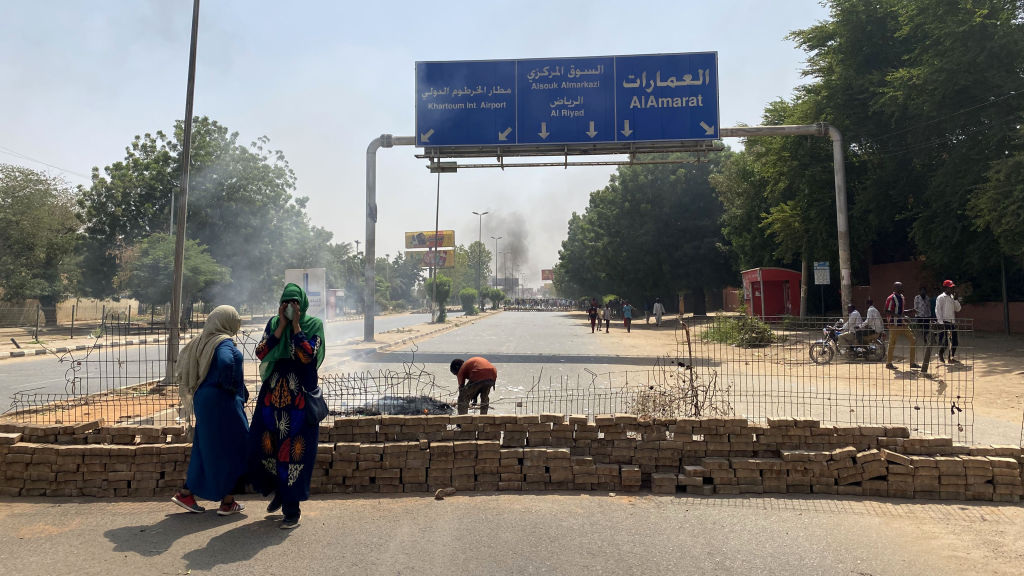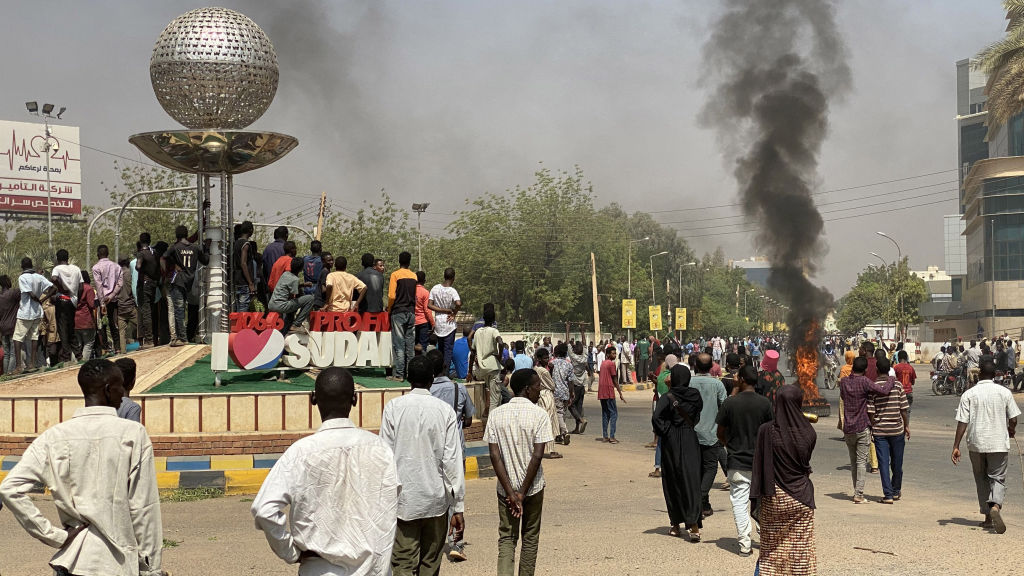
A street view during an unrest in Khartoum, Sudan, October 25, 2021. /Getty
A street view during an unrest in Khartoum, Sudan, October 25, 2021. /Getty
Editor's note: Andrew Korybko is a Moscow-based American political analyst. The article reflects the author's views and not necessarily those of CGTN.
Sudan experienced its second unrest in two years on October 25 after the armed forces seized power and dissolved the joint civilian-military Sovereign Council that was supposed to transfer power to civilian control by sometime next month. The first unrest there in recent memory took place in 2019 after the military ousted former long-serving leader Omar al-Bashir, who himself came to power in a unrest in 1989, following large-scale protests against his rule that were driven by their participants' desire for political and economic reform.
The latest unrest comes after similar protests driven by the same reasons. Several failed coup attempts have happened since then, with the most recent one occurring last month. It also occurred right after U.S. Special Envoy for the Horn of Africa Jeffrey Feltman left Khartoum, prompting speculation among some that America might have been behind this latest regime change, which resulted in Sudan's suspension from the African Union. For what it's worth, the U.S. has officially condemned the unrest and paused $700 million in emergency assistance to the country.
There are some key stakeholders in Sudanese stability, which is why the events that just transpired there might have some significant geostrategic dimensions. This country only recently emerged from Western isolation over the past few years after former President Omar al-Bashir joined the Saudi-led war in Yemen. The U.S. had designated Sudan as a "state sponsor of terrorism" in 1993 for supporting armed Palestinian groups and hosting Osama bin Laden. In response, Sudan moved closer to China, Russia and reportedly also Iran for some time.
Joining the Saudi-led war in Yemen brought Sudan closer to the nearby U.S.-friendly Gulf Cooperation Council (GCC), which resulted in the country severing its ties with Iran in January 2016 in solidarity with Riyadh, and served as an icebreaker of sorts for unofficially initiating talks with the United States. Following Bashir's ouster, Saudi Arabia and the UAE quickly moved in to provide Sudan's new military authorities with much-needed aid. This could be interpreted as a reward for removing the man who backed their Muslim Brotherhood foes.
That doesn't automatically mean that they were behind the 2019 unrest, but it nevertheless advanced their regional security interests in that respect. The GCC's close Egyptian partner that neighbors Sudan and which is presently led by its former commander-in-chief who deposed the prior Muslim Brotherhood-allied government of the late Mohamed Morsi in 2013 must also have been pleased by that development for similar reasons. Quite naturally then, Sudan strengthened its relations with the GCC and Egypt after its 2019 unrest.

Sudanese people take to the streets during an unrest in Khartoum, Sudan, October 25, 2021. /Getty
Sudanese people take to the streets during an unrest in Khartoum, Sudan, October 25, 2021. /Getty
It also reached a U.S.-mediated agreement to normalize relations with Israel last year, following in the footsteps of GCC members Bahrain and the UAE, which were preceded by Egypt several decades prior. America eventually removed Sudan from its list of "state sponsors of terrorism" last December in what was likely a quid pro quo for its military's removal of Bashir and their agreement with Israel two months before. As it currently stands, there isn't any reason to expect these policies to change after the latest unrest.
Ties with China are also expected to remain strong because their Belt & Road Initiative (BRI) cooperation is mutually beneficial. They weren't adversely affected after the 2019 unrest and likely won't be negatively impacted by the latest one. These economic relations can help Sudan balance between the West (U.S./Israel), Near East (GCC/Egypt), and East (China). What's less certain, though, is how relations with neighboring Ethiopia and Sudan's close Russian partner will evolve after the unrest.
Sudan shares Egypt's concerns about the Grand Ethiopian Renaissance Dam (GERD). They fear that Ethiopia could use this megaproject to cut off the Nile River's flow to their countries, a charge that Addis Ababa denies. Furthermore, a border dispute has recently been revived between Sudan and Ethiopia against the context of the latter's ongoing anti-terrorist operations in its northern Tigray Region that abuts Sudan and which began in November 2020. The U.S. claims that Ethiopia is carrying out "ethnic cleansing" there, which it also denies.
A U.S.-based Horn of Africa analyst told the BBC on Monday that "the West could consider creating a humanitarian corridor into Tigray from Sudan or declare a no-fly zone." Such a scenario, which Sudan's new military authorities might countenance as a strategic compromise for lessening Western pressure against them after their latest unrest, would be regionally destabilizing. As for ties with Russia, these same authorities might bargain away its already uncertain Red Sea naval base in exchange for the same Western pressure relief.
With these geostrategic dimensions in mind, a broad forecast can be made about post-unrest Sudan. Its Western, Near East and Eastern foreign policy vectors probably won't change, while its relations with Ethiopia and Russia might worsen as part of a Machiavellian compromise. The military authorities urgently need to stabilize the domestic situation, which might require a heavy-handed approach that isn't aligned with Western values, but advancing U.S. interests vis-a-vis those two countries could deter its criticism and earn its tacit support.
(If you want to contribute and have specific expertise, please contact us at opinions@cgtn.com.)

